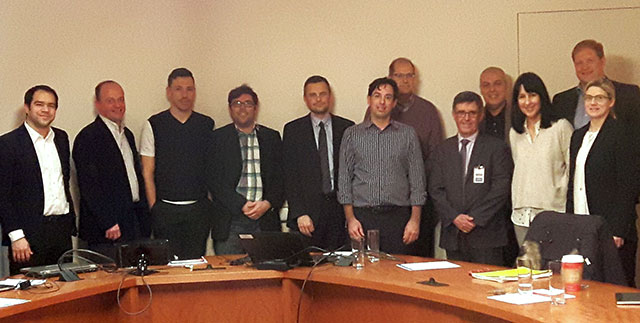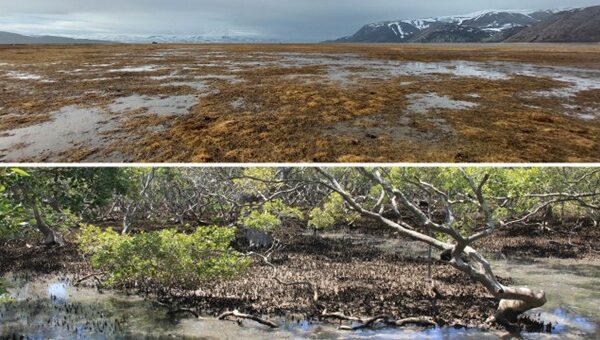- Research
Emphasis should be on the energy needs of companies and communities rather than locally available resources. Furthermore, social acceptability and active involvement of the aboriginal communities are key to developing renewable energy in the North. These were two main takeaways that emerged from the workshop on defining energy solutions for northern regions held at INRS on December 9, 2016, in the wake of the international research cooperation agreement between Quebec and Iceland.

José Acuña Sequra (KTH Royal Institute of Technology à Stockholm), René Therrien (Université Laval), Louis Gosselin (Université Laval), Félix-Antoine Comeau (Institut national de la recherche scientifique), Óli Grétar Blöndal Sveinsson (Landsvirkjun), Jasmin Raymond (Institut national de la recherche scientifique), René Roy (Ouranos), Gaétan Lantagne (Institut de recherche d’Hydro-Québec), Hakim Nesreddine (Institut de recherche d’Hydro-Québec), Juliet Ann Newson (Université de Reykjavik), Ari Kristinn Jónsson (Université de Reykjavik), Sigrún Nanna Karlsdóttir (Université d’Islande).
The workshop, which brought together INRS (which initiated the agreement), Université Laval, Reykjavik University, University of Iceland, Landsvirkjun (Iceland’s national power company), Hydro-Québec’s Research Institute (IREQ), and Ouranos Consortium, was an opportunity for university partners and energy producers to discuss and define collaborative projects aimed at replacing fossil fuels with renewable energy, not only to preserve the environment but also to reduce price volatility. Participants highlighted the importance of improving:
- Short-, medium-, and long-term energy demand forecasts for northern regions
- Our understanding of weather and climate change in order to adapt energy systems to the realities of northern regions
By pooling their complementary expertise in shallow geothermal energy, mobile energy system development, geothermal system engineering, and new materials research, partnership members want to provide private and public decision makers with valuable scientific and technical insight. To succeed, they plan to:
- Develop capacity-building projects on common issues relating to integrated energy systems
- Incorporate bilateral activities into ongoing research projects and to establish a dual degree agreement between universities in Quebec and Iceland
- Promote student enrolment in summer sessions at participating institutions and to foster faculty mobility and personnel exchanges with industrial partners
Geothermal symposium
Choosing the right materials for geothermal operations remains a constant challenge, which is why cooperation and knowledge sharing between universities, industry, and government is crucial to the growth of geothermal energy. That was the general consensus following the geothermal symposium held on December 8, 2016, at INRS’s Eau Terre Environnement Research Centre.
The event gave researchers from Iceland, Sweden, and Quebec an opportunity to review the state of knowledge in this multidisciplinary field. They concluded that:
- The scarcity of equilibrium temperature measurements in Quebec leads to considerable uncertainty when analyzing regional geothermal potential
- Deepening our knowledge of available geothermal resources is critical to dealing with the growth of the drilling industry, which may affect the energy market
- Geothermal energy can be used anywhere, regardless of local geological conditions
- There is a lack of data on northern Quebec, and an easier access to geothermal data is essential
- Demonstration projects are required to validate assumptions regarding low temperature heat pumps
- Research on new materials is boosting the performance and reducing the cost of geothermal systems
“Iceland’s and Sweden’s experience with geothermal energy in the Arctic Circle is paving the way for Quebec”.
Jasmin Raymond, hoder of the Northern Geothermal Potential Research Chair.

Green energy: from innovation to transition



